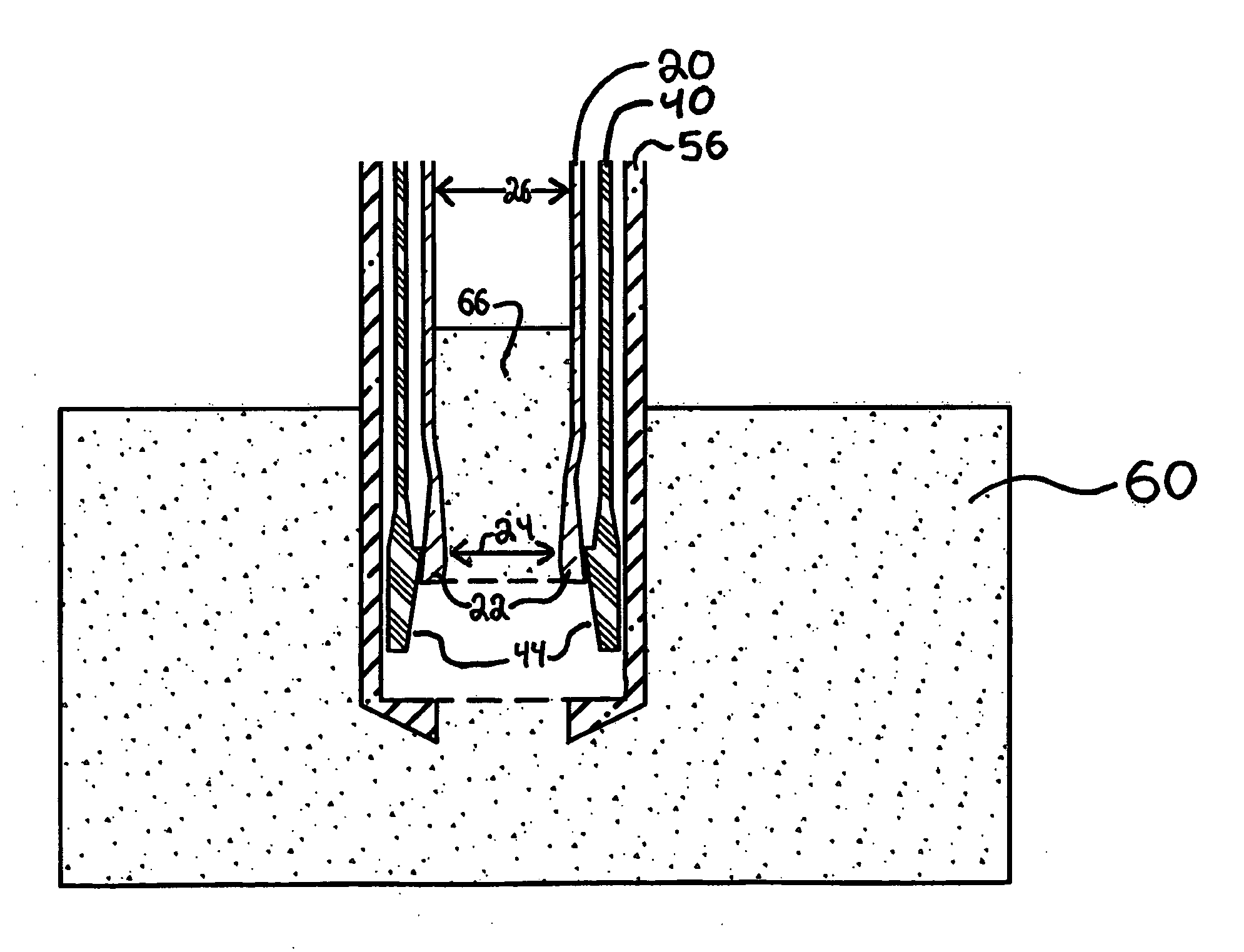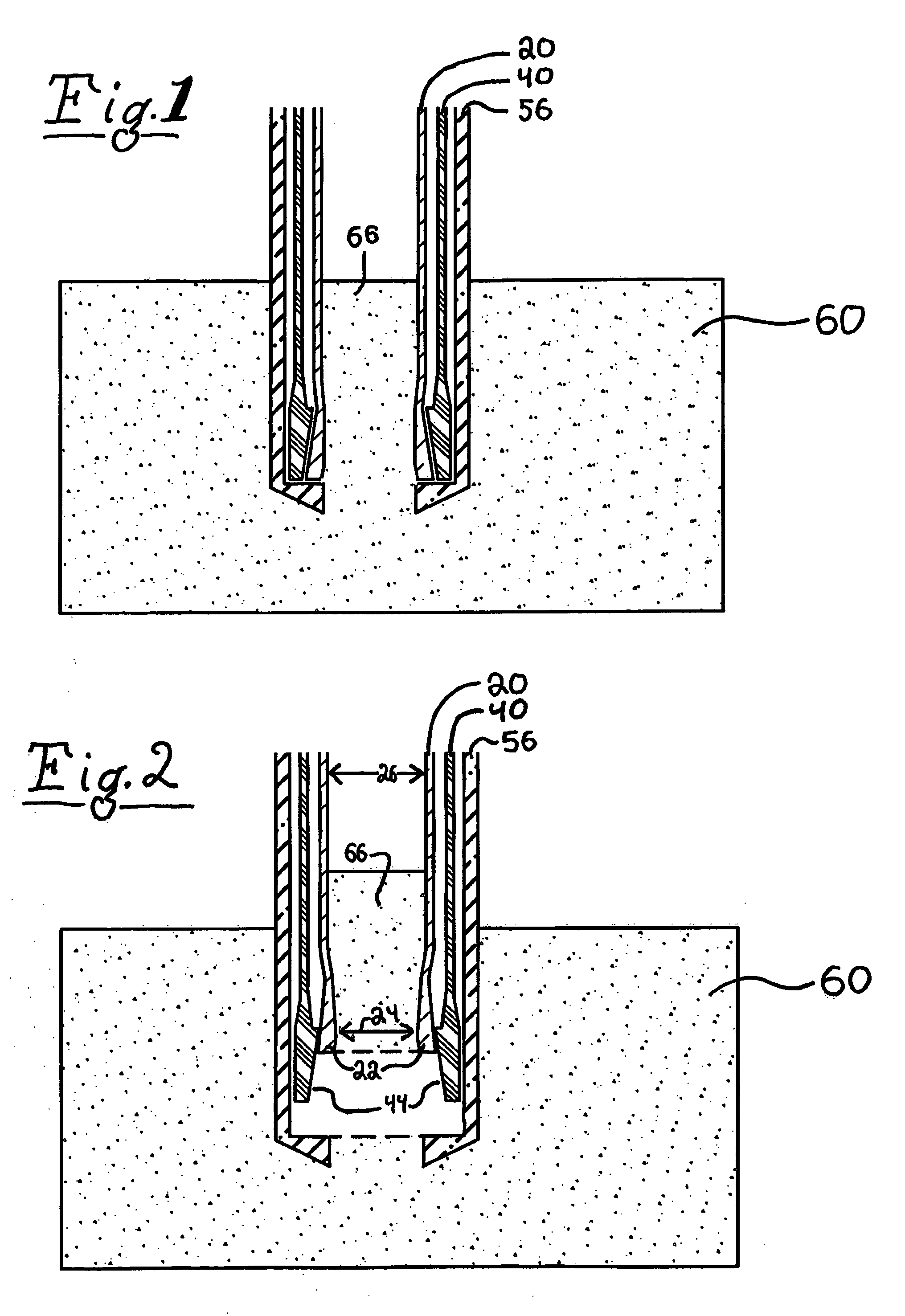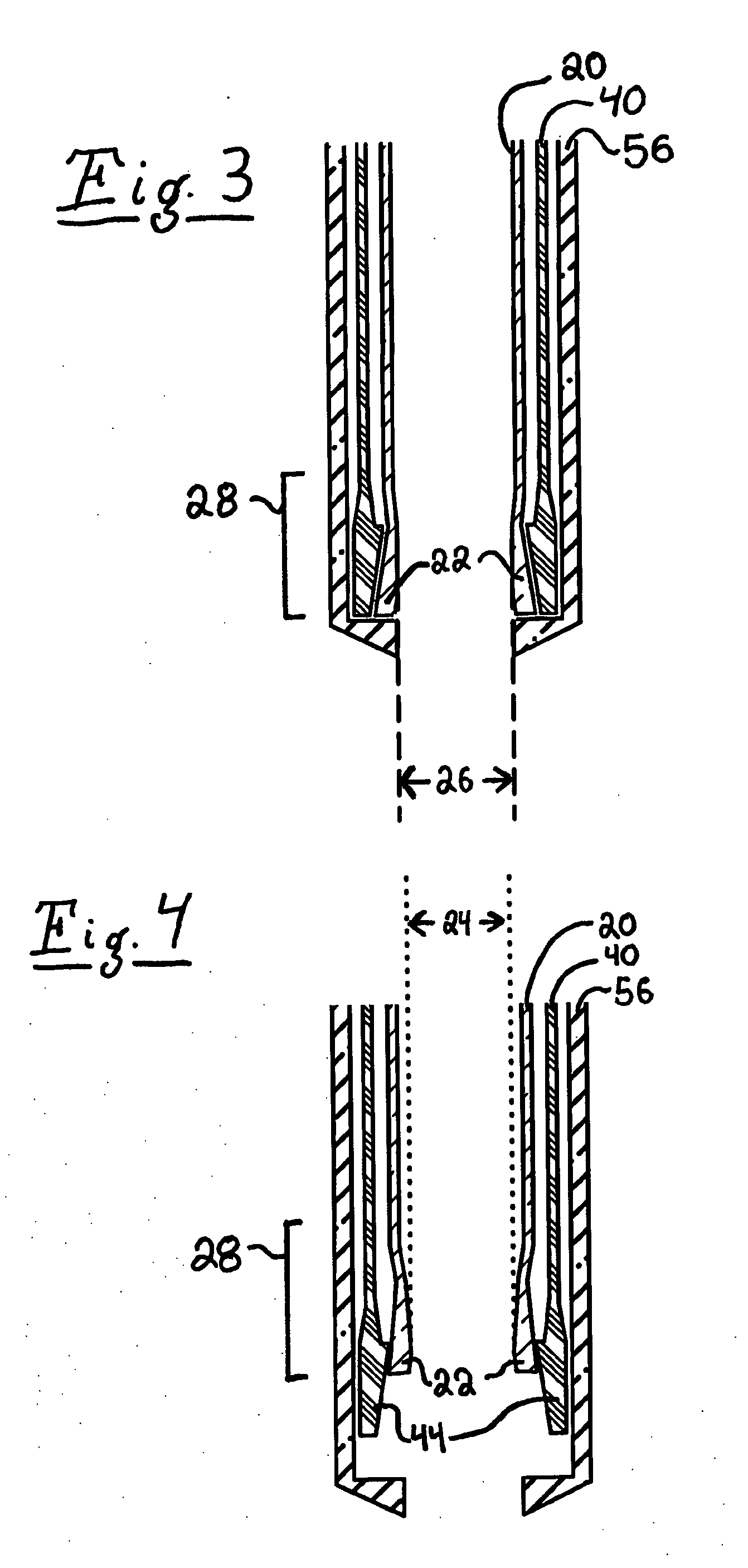Rock Core Removal Method and Apparatus
a technology for rock cores and sampling, applied in the direction of earth drilling tools, drilling accessories, borehole/well accessories, etc., can solve the problems of increasing the size of the sample, reducing the accuracy of the sample, so as to reduce the diameter of the collet tube collecting end, the effect of simplifying the design
- Summary
- Abstract
- Description
- Claims
- Application Information
AI Technical Summary
Benefits of technology
Problems solved by technology
Method used
Image
Examples
Embodiment Construction
[0034]The following description is merely exemplary in nature and is not intended to limit the present disclosure, application, or uses. It should be understood that throughout the drawings, corresponding reference numerals indicate like or corresponding parts and features.
[0035]Referring to FIG. 3, the collecting end of the collet core removal apparatus is shown, made up of a collet tube 20 located within a ground tube 40 which is further located within a drill tube 50. Referring to FIG. 11, the collet tube 20 has a collet tube driving end 21. The ground tube 40 also has a ground tube driving end 41.
[0036]Referring back to FIG. 3, the collet tube collecting end 28 has constricting fingers 22 that are capable of flexing inwards radially. Referring to FIG. 7, the constricting fingers 22 of the collet tube 20 can vary in design, material, and number. One preferred embodiment which is depicted in FIG. 7 shows the constricting fingers 22 formed by slats of collet tube material. It is re...
PUM
 Login to View More
Login to View More Abstract
Description
Claims
Application Information
 Login to View More
Login to View More - R&D
- Intellectual Property
- Life Sciences
- Materials
- Tech Scout
- Unparalleled Data Quality
- Higher Quality Content
- 60% Fewer Hallucinations
Browse by: Latest US Patents, China's latest patents, Technical Efficacy Thesaurus, Application Domain, Technology Topic, Popular Technical Reports.
© 2025 PatSnap. All rights reserved.Legal|Privacy policy|Modern Slavery Act Transparency Statement|Sitemap|About US| Contact US: help@patsnap.com



